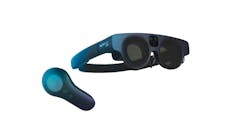Tool Q&A: What to look for in tire service and alignment equipment
This monthly PTEN column covers some of your most pressing questions related to tools and equipment in a shop environment. With a never-ending barrage of new vehicle technology headed your way, it creates a continuously changing set of requirements for tool and equipment applications. Staying on top of all this can be a daunting task, so PTEN offer this column because we're on your side when it comes to waging the war of equipment versus vehicle technology. With that said, please send along your questions to PTEN so we can consider them for an upcoming issue.
This month, we’ll follow-up on some of your questions submitted on the topic of tire and wheel service. While some may regard this area of service as one that's none too challenging with respect to technology, nothing could be further from the truth. Read on.
Q. We're a volume tire shop that relies on speed in everything we do. When a car has a Tire Pressure Monitoring System (TPMS) it really slows us down if we have to reset or perform a relearn on the system. Is there a way we can get around this?
A. Every new technology challenges the way we do things because of the changes it brings. Albeit true that having to perform a reset or relearn takes time, try to look at this as an opportunity rather than an impediment. The reality is that going forward, tire and wheel service will never be the same. From here on, it will require consideration of the TPMS so that you ensure customer satisfaction. To maintain efficiency with your technicians, develop a plan to help maximize their time. Maybe this means developing a workflow so that some employees specialize in tire and wheel operations, while others focus on the various service aspects of TPMS. One thing's for sure; TPMS isn't going away, so work with the resources you have to make them most effective.
Q. I've had a few customers ask if their TPMS requires periodic maintenance. Other than a reset or relearn after a tire rotation or repair, that's all there is, right?
A. Although there are no moving parts to essentially wear out with TPMS, it may require a reset or relearn procedure. Furthermore, over time, the integral battery of the sensors used inside each wheel of a direct TPMS may weaken, requiring sensor replacement. It's estimated that sensor batteries should last 7-10 years. We'll just have to wait and see if that holds true in the real world.
Q. We're looking for a TPMS tool for our shop. What do I look for?
A. Like most tools, there's a variety of TPMS tools on the market, so compare them thoroughly and patiently. Ensure that the tool's manufacturer claims conformance with the full lineup of cars you service. While you're at it, check into the manufacturer's update policy to make sure your tool will keep pace with vehicle technology. If possible, get your hands on the actual tools you're considering for a trial. It's likely that you'll discover both things you like and don't like during your trials with different vehicles. As another item to look for on your checklist of compatibility, check to see if each of the tools you're considering can communicate with the new, universal sensors that are emerging into the marketplace. Although sensor manufacturers strive to ensure communication with existing tools, make sure the tool itself is capable of “conversing” with the sensor. As a footnote, some car makes such as Toyota require a scan tool to performs a system reset. Finally, compare notes with fellow techs and shop owners for their insight on TPMS tool selection.
Q. We have an ancient tire changer in our shop that needs replacing. I know there are numerous brands out there, but how do I begin the selection process for a new machine?
A. First of all, make sure you know the range of tires and wheels you service now, as well as thinking about the future. Factor in things like maximum wheel diameter and maximum wheel width. Also consider the need to service rims with low-profile tires or run-flat/PAX tires. Once you know the capacity of the machine you seek, then consider whether an air or electric machine might suit your purposes better. Keep in mind that some electric tire changers run on 110 volts, while others use 220 volts. Plan accordingly so that you have the appropriate outlet available for the machine you choose. This might also be a good time to consider some of the newer changer technologies, such as leverless design. To get the best feel for any machine, do some hands-on testing with the full range of tires and wheels you service.
Q. We're considering getting into wheel alignment to round out our offerings of tire and wheel service. Should we offer two-wheel or four-wheel alignments?
A. The days of two-wheel alignments are long over; four-wheel alignment is the only way to go. The fundamental principle that supports the concept of four-wheel alignment correlates to a characteristic where the rear wheels steer the car, but the front wheels turn it. Since the rear axle sets the direction of vehicle travel, this direction is referred to as the thrust line. It's really a 90-degree angle towards the front of the car, referenced off a straight line through the rear wheels. The next line for discussion is the geometric centerline. It is an imaginary line extending through the center of the car, all the way from the back to the front. If a car's alignment was absolutely perfect, the thrust line would overlap the geometric centerline, making the two lines look like one. However, since no car is perfect, some allowance for deviation from the geometric centerline is allowed. This difference, the angle formed between the geometric centerline and the thrust line, is called the thrust angle. Nowadays, car makers specify the maximum amount of thrust angle for their vehicles.
Q. As a shop owner, what can I do to ease the selection of the right alignment equipment?
A. Without question, choosing between different systems can seem to be a daunting task. First, get your techs on board and seek their input into equipment selection. Then consider some of the key factors dictating your choice. Space is one factor, so find out how much space a typical machine takes and don't forget the rack that you'll probably need. For shops with limited space, there are aligners that can fit into extremely tight quarters. Also consider your current and future alignment applications. Do you plan on aligning just cars, cars and light trucks, or even medium-sized trucks as well? It's critical that you establish your needs up front, because alignment heads use different types of sensing technology to take measurements from the vehicle.
If you plan on working on long-wheelbase vehicles like limousines and extended-cab pickups, make sure the alignment manufacturer's measurement span exceeds the wheelbase of the longest vehicle you'll see. Without getting into any formulas, payback on an alignment machine will have a lot to do with how often it's used. A machine used 12 times a week will earn its keep a lot faster than a machine used three times a week.
Keep in mind that alignment service also brings a lucrative second profit center, the sales of parts and labor on things like steering and suspension components and other front-end parts.
Don't forget to factor in training into your decision. This can be a small or large consideration, depending on your situation. If you're already doing alignments, the training will probably serve in more of an equipment-orientation role. If you've never done alignments before, the training becomes doubly important with more extensive requirements. In that case, it will help you understand the alignment machine and the vehicles you use it on.
Q. We have an ongoing debate in our shop regarding wheel torque. One of our techs claims that torque sticks do an adequate job of torquing wheel lugs. Another tech believes that wheel lugs should only be torqued with a torque wrench. Who's right?
A. In general terms, both techs are right, but some conditions apply. First, realize that it's critical to always torque wheel lugs to their proper specifications. When a wheel nut is tightened, the stud stretches in response to the torque being applied to the wheel nut. Since the amount of stretch is dictated by the size and length of the stud, along with the amount of torque applied, the stud and nut render a certain amount of clamping force that contributes to the retention of the wheel (and sometimes the rotor). If too much torque is applied, the stud will stretch beyond its metallurgical limits, and possibly also distort the casting that the stud is located in. If too little torque is applied, the stud and nut will not provide sufficient clamping force and the wheel may come loose. Maybe the best way to put this debate to rest is to confirm that the toque rendered with the torque stick equates to the proper reading on the torque wrench. Oh, and don't forget that wheel lugs should be tightened in an alternating pattern and torque wrenches need to be calibrated regularly to ensure accuracy.
That's it for this issue's Tool Q&A. Watch for the next issue of PTEN when we address your questions related to electrical system tools.


